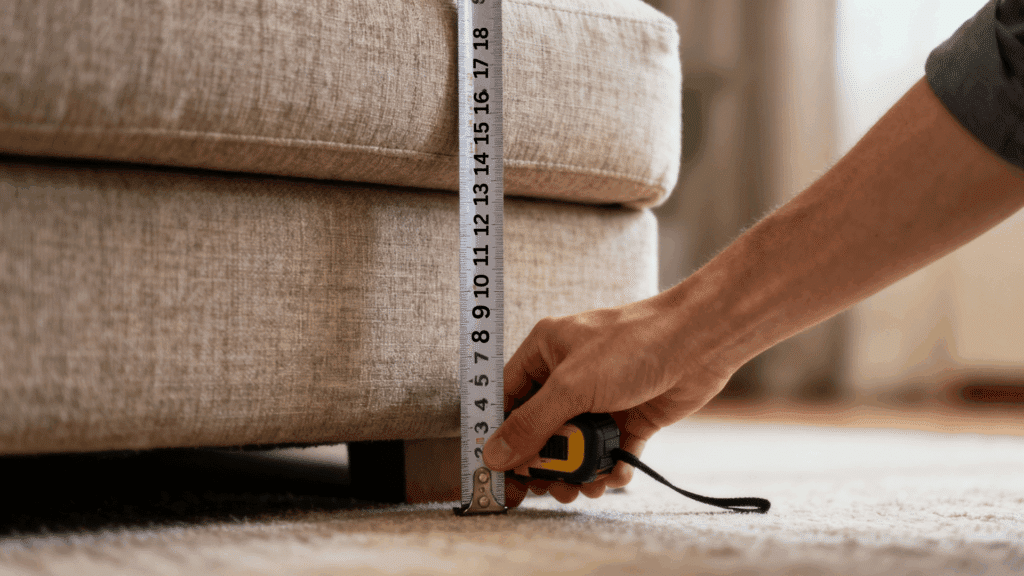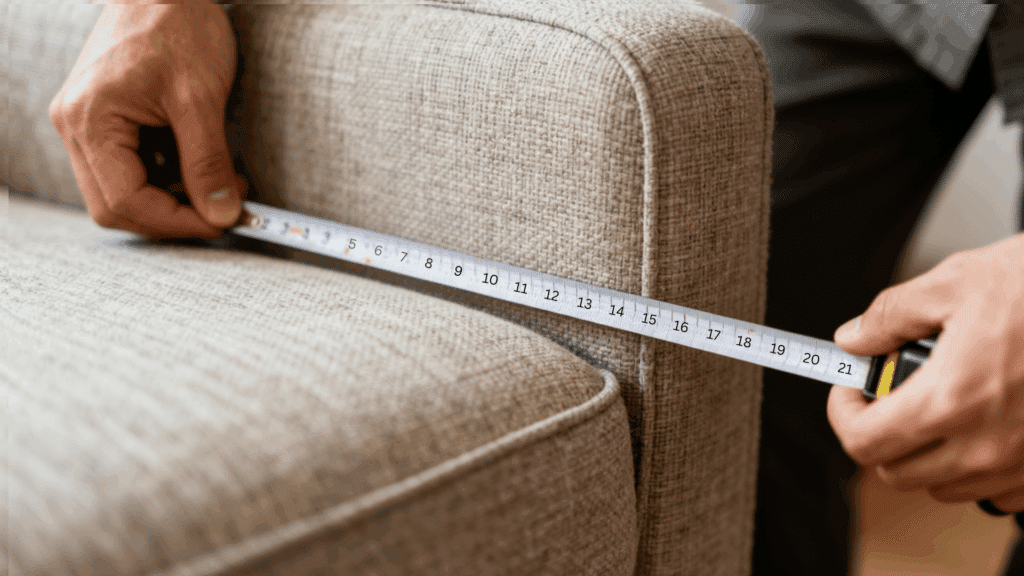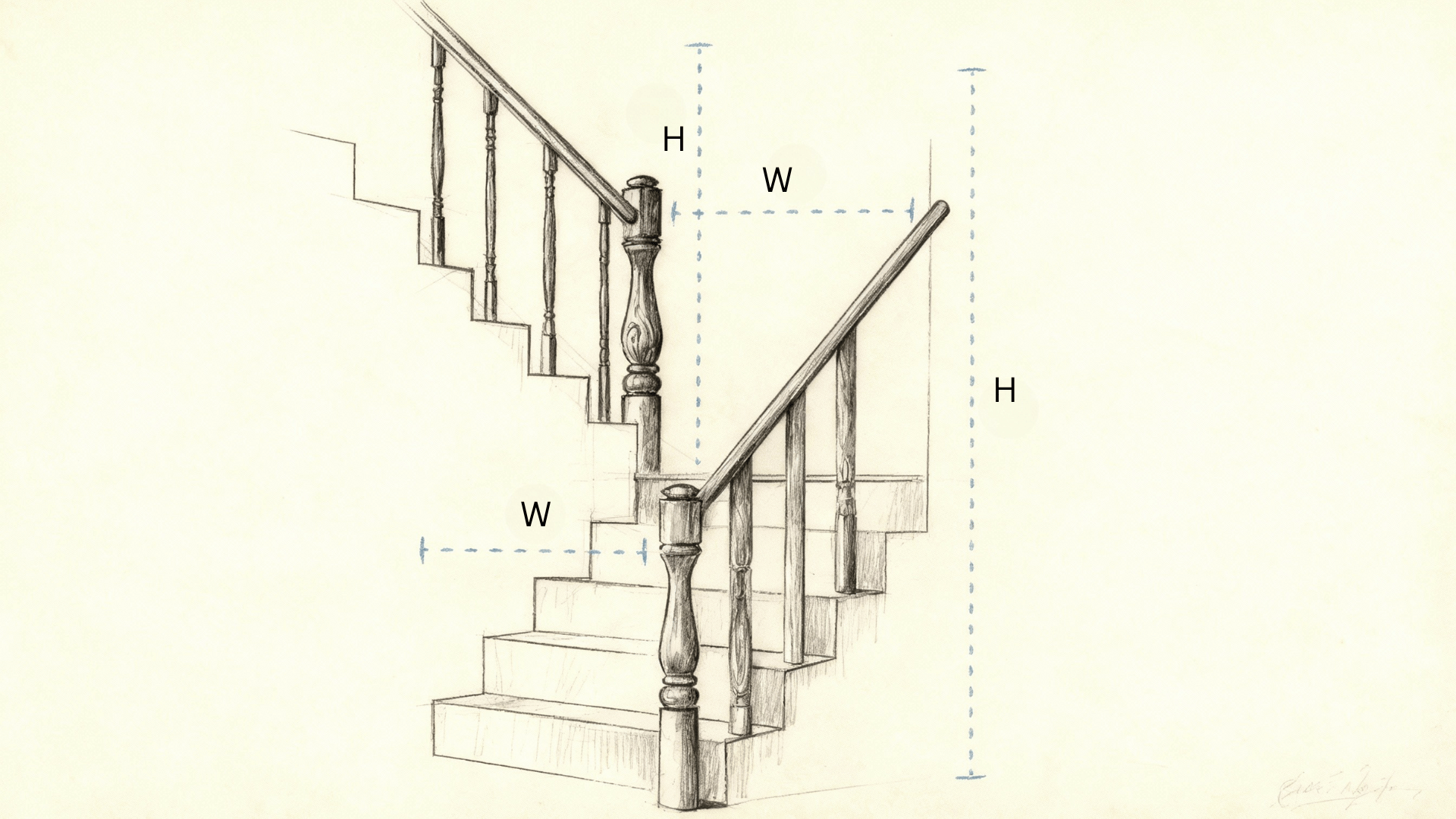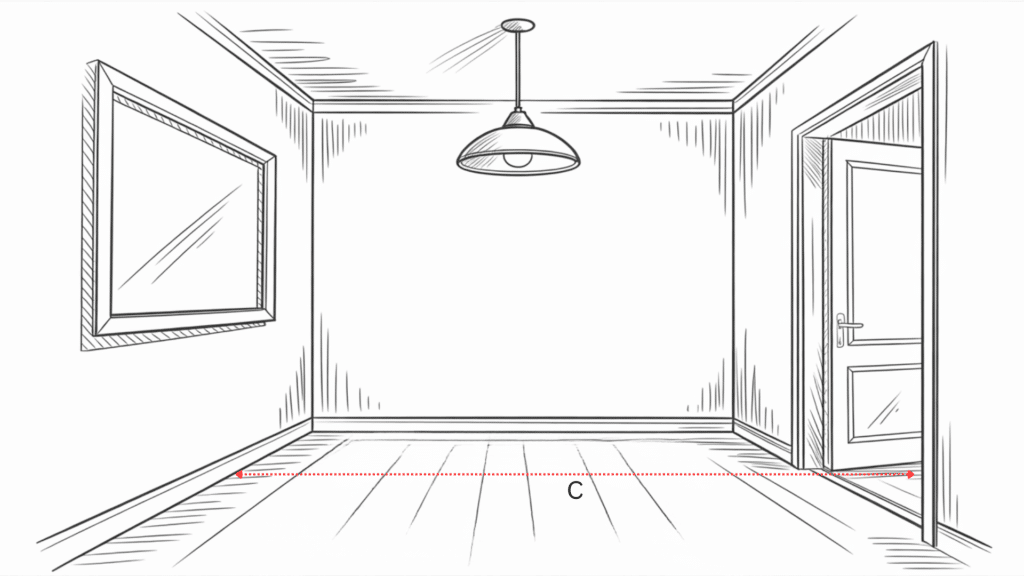Ready to avoid the frustration of furniture that doesn’t fit through your door? Let’s learn the measuring skills that guarantee smooth deliveries.
Nothing feels worse than watching delivery people struggle to get furniture through your doorway.
Accurate measurements ensure your new sofa, bed, or cabinet travels safely from the store to its designated spot.
This simple skill saves money on return shipping and protects you from restocking fees. Many people skip measuring because it seems time-consuming.
Understanding the Dimensions
When learning how to measure furniture, you need to understand three basic furniture dimensions that matter most.
Height measures from the floor to the tallest point, usually the back or top. The width spans from the widest points on the left to the right sides.
Depth runs from the front edge to the back, showing how far the piece extends into your room. Always measure at the widest points, not where the piece narrows.
Furniture rarely forms perfect rectangles, so one measurement at the center isn’t enough. Arms on sofas, decoration on headboards, handles all add crucial inches.
Write down each measurement immediately to avoid confusion. Keep these numbers with you when furniture shopping, either on your phone or in a notebook.
Steps to Measure Furniture Accurately
Measuring furniture correctly ensures it fits your space perfectly, avoiding costly mistakes and unnecessary returns or exchanges.
Step 1: Measure the Height

Start by measuring from the floor straight up to the highest point of your furniture piece. Place your tape measure on the ground and extend it vertically upward.
For chairs and sofas, measure to the top of the back cushion or frame, whichever sits higher.
Armoires and bookcases require measurement to their absolute peak, including any decorative crown molding or feet.
Step 2: Measure the Width

Position yourself directly in front of the furniture and measure from the far left edge to the far right edge.
This furniture dimension tells you how much wall space the piece occupies. For sofas with rolled arms, measure to the outermost point of the arms.
Tables require measuring across the top from edge to edge at the widest point. Chairs need measurement across the front, including both armrests if present.
Step 3: Measure the Depth

Measure from the front face of the furniture piece straight back to its furthest rear point. This shows how far the furniture extends into your room from the wall.
For sofas and chairs, measure from the front edge of the seat cushion to the back of the frame or cushion.
Tables need measurement from the front edge to the back edge. Depth measurements are often overlooked, but they affect traffic flow in rooms.
Obstacles to Watch For: Light Fixtures, Radiators, and Wall Protrusions
When installing window treatments, ceiling-mounted near your windows can significantly complicate the installation process and affect functionality.
- Ceiling Fixtures: Measure the height and width of hanging chandeliers or pendant lights to ensure tall furniture pieces won’t block or collide with them.
- Baseboard Heaters: Check the depth of radiators or heating units along walls since they prevent furniture from sitting flush against the surface behind them.
- Window Sills: Note how far the window ledges extend into the room, as they can interfere with placing beds, sofas, or cabinets directly beneath the windows.
- Electrical Outlets: Map the locations of outlets and switches on walls to ensure they aren’t covered.
- Doorknob Clearance: Verify that door handles have adequate space to open fully without hitting furniture edges when doors swing into the room.
- Architectural Molding: Measure any decorative trim, crown molding, or chair rails that protrude from walls.
Why Measure Your Existing Furniture Before Buying New Pieces
Measuring current furniture helps you understand how new pieces will fit proportionally. You will see that even if the new sofa overwhelms your living room.
Measure the space between your current couch and coffee table to replicate comfortable distances.
This practice reveals that even if you actually have room for additional pieces, you’re not considering them. Many people found that their spaces are smaller.
You’ll also identify even if new furniture matches or clashes with current pieces in size. Checking measurements prevents buying a dining table too large for chairs.
Understanding actual space prevents the common mistake of ordering oversized furniture that dominates rooms.
How to Measure Your Home’s Entry Points
Securing your home starts with knowing where intruders could enter. Here’s how to identify and assess these vulnerable access points.
1. Measuring Doorways Properly

Start by measuring the door opening width from one side frame to the other. Don’t measure the actual door itself, only the clear space when it’s open.
Next, measure the height from the floor to the top of the door frame. Check the depth of the doorway passage through the wall thickness.
Temporarily remove any doors that swing into the path during furniture delivery. Measure diagonally across the door opening for furniture that might fit at angles.
2. Calculating Stairway Clearances

Measure the width between stairway walls or railings at the narrowest point. Stairs rarely maintain consistent width, so check multiple spots along the flight.
Calculate the vertical height from each step to the ceiling or upper floor. Measure the depth of each individual step tread where movers will place furniture.
Check for any overhead obstacles like light fixtures or low-hanging ceiling sections. Stairway turns need special attention since they create tight pivoting spots.
3. Evaluating Hallway Spaces

Measure hallway width at the narrowest section, usually near doorways or corners. Check the ceiling height throughout since some hallways have lower sections.
Look for protruding elements like thermostats, light switches, or wall decorations that reduce space.
Measure around any corners where hallways turn, noting the turning radius available. Calculate the diagonal distance across corners where furniture must pivot.
Common Mistakes to Avoid While Measuring
Learn from these common errors that cause delivery disasters and costly returns for unprepared buyers.
- Rounding Numbers: Adjusting measurements up or down loses critical inches that determine even if furniture actually fits through tight spaces successfully.
- Forgetting Angles: Measuring only straight lines ignores diagonal options that allow larger pieces to navigate corners and doorways at tilted positions.
- Ignoring Obstructions: Overlooking radiators, baseboards, and light switches creates surprise barriers that block furniture placement.
- Skipping Packaging: Neglecting to account for boxes and protective wrapping adds significant bulk, making delivered furniture larger than the final assembled.
- Measuring Once: Taking single measurements without verification leads to errors from tape measure sag, misreading numbers.
- Assuming Symmetry: Believing both sides match perfectly misses irregular designs where one side extends further than the other, unexpectedly.
Conclusion
Now you understand exactly how to measure furniture and spaces correctly, ensuring stress-free deliveries every single time you shop.
Accurate measuring takes just minutes but prevents hours of frustration and potential financial losses.
Knowing how to measure furniture properly means understanding all three dimensions.
Ready to shop with confidence? Grab your tape measure and start recording your space measurements before your next furniture purchase.

